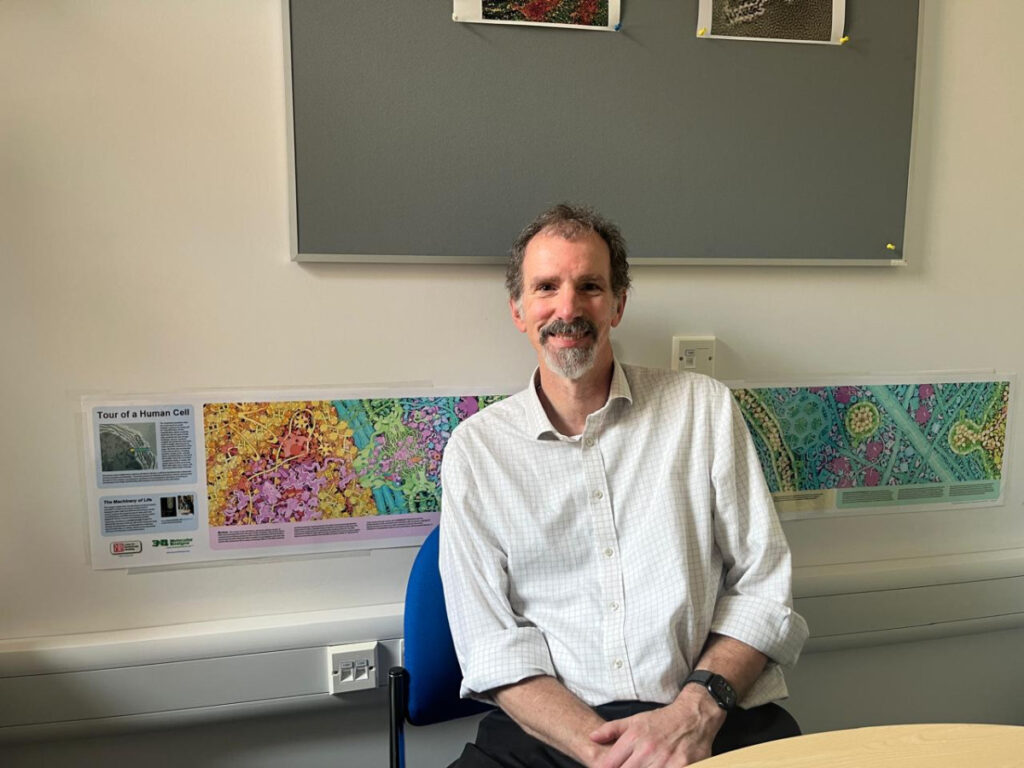
Just one small mistake in the protein structure—a misfold, a mutation, or even an incorrect amount of protein—can tip the balance from health to disease. Proteins, the body’s molecular machines, are crucial for maintaining our biological processes. When they malfunction, the consequences can be profound and far-reaching.
The significance of protein structure was first highlighted when Nobel Prize-winner Max Perutz solved the 3D structure of haemoglobin. This breakthrough in protein research demonstrated how even the tiniest structural change can have life-or-death implications, as an affected protein may be rendered unable to perform its vital functions in the body.
The Science of Protein Misfolding
At Cambridge University’s Centre for Misfolding Diseases, Michele Vendruscolo investigates what happens when proteins like haemoglobin go rogue, leading to conditions such as thalassaemia and sickle cell disease. According to Vendruscolo, proteins should be thought of as machines that perform essential work in the body, such as breaking down food and reassembling its components for bodily use. For proteins to function properly, they must acquire a specific shape known as the native state.
However, under certain conditions, especially with age or stress, proteins may fail to achieve this state, resulting in misfolding. Vendruscolo explains, “We are studying the process by which proteins fail to function normally, misfold, and malfunction, leading to disease processes.”
Consequences of Misfolding
When proteins do not maintain the correct shape, a variety of diseases can arise. Misfolding and aggregation are common causes of diseases that affect millions worldwide, including Alzheimer’s, Parkinson’s, and type 2 diabetes. “Diseases like cancer and Alzheimer’s are dependent on protein levels, correct folding, and proper location within the body,” adds researcher Marushka.
Haemoglobin: A Case Study
Haemoglobin serves as a prime example of the importance of protein structure and function. Historically, it has been extensively studied not only for its role in oxygen transport but also for its implications in diseases like thalassaemia and sickle cell disease. Vendruscolo notes, “Haemoglobin is a good example because there are diseases like thalassaemia related to protein quantity and sickle cell related to shape changes.”
Understanding Thalassaemia and Sickle Cell Disease
In thalassaemia, mutations decrease haemoglobin production, leading to insufficient protein levels. “It’s like having too few workers in a production chain,” Vendruscolo explains. In contrast, sickle cell disease involves mutations that impair haemoglobin’s function, despite adequate protein levels. The basic function of haemoglobin is to carry oxygen, requiring it to change shape to capture and release oxygen effectively. Mutations disrupt this process, leading to anemia due to inadequate oxygen transport.
“The therapy for sickle cell is to keep the protein in the monomeric state—to reverse the self-association process,” Vendruscolo states.
Broader Implications for Medicine
Understanding protein structure is crucial for developing treatments for a range of diseases. Vendruscolo highlights that maintaining proteins in their functional state is a key therapeutic strategy. “We have a powerful quality control system, called protein homeostasis, that ensures correct protein function throughout our lives,” he explains. However, when this system fails, diseases emerge, underscoring the need for therapies that enhance protein homeostasis.
Research into protein misfolding not only advances our understanding of specific diseases but also informs broader medical and drug discovery efforts. By elucidating the mechanisms of protein folding and misfolding, scientists can develop targeted interventions to correct these molecular errors, offering hope for millions affected by protein-related diseases.
As our knowledge of protein dynamics continues to expand, so too does the potential for innovative treatments that could transform the landscape of modern medicine. The study of proteins, from haemoglobin to those involved in neurodegenerative diseases, remains a vibrant and critical field of research with profound implications for human health.







